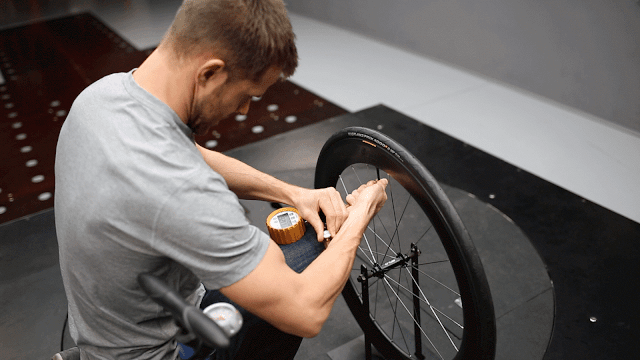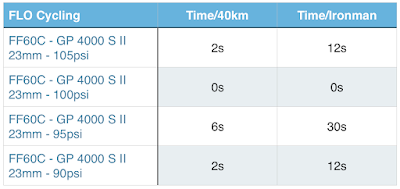Article Quicklinks
hide
The first time I heard someone say tire pressure would change aerodynamics, I questioned if this would be true. The more I thought about it, the more I questioned how aerodynamics would be effected by tire pressure. When you change the air pressure in a tire, you change the shape of the tires contact patch, and ultimately the profile of the tire. If tire pressure did make a difference in drag, my guess was that it would be a small change.
To answer this question, Chris and I decided to study the effect tire pressure has on aerodynamics when we visited the A2 Wind Tunnel in November of 2015.
If you are interested in our other studies from the A2 Wind Tunnel, please be sure to check them out.
Aerodynamic Difference between Sapim CX-Ray and Round Spokes
Does Covering the Valve Cutout on a DISC Wheel Matter?
How Much Drag Does a Clydesdale Build Add to Cycling Wheel?
If you are interested in our other studies from the A2 Wind Tunnel, please be sure to check them out.
Aerodynamic Difference between Sapim CX-Ray and Round Spokes
Does Covering the Valve Cutout on a DISC Wheel Matter?
How Much Drag Does a Clydesdale Build Add to Cycling Wheel?
What We Tested
We tested our front FLO 60 Carbon Clincher with a 23mm Continental GP 4000 S II at the tire pressures listed below.
– 90psi
– 95psi
– 100psi
– 105psi
How We Tested the Wheels
It’s important to define how a test is performed in a wind tunnel. There are countless variables, and if you are not clear about the test, the results are not very clear. Here is how we tested the wheels at the A2 Wind Tunnel.
1. Tare was calculated and removed from all tests.
2. Each wheel was swept from 0-20 degrees of yaw, in 2.5 degree increments.
3. Each measurement was taken twice and averaged.
4. The same Continental GP 4000 S II tire in a 23mm size was used for each test.
5. The tire pressures were calibrated with a highly accurate digital gauge.
5. The tire pressures were calibrated with a highly accurate digital gauge.
The Results
It turns out I was wrong. By changing the tire pressure from 100psi to 95psi, you save 6 seconds over a 40km and 30 seconds over an Ironman. Considering a bike has two wheels, this savings would increase when taking both into consideration. While it won’t double, it will increase.
The table below shows the time savings for the psi measurements listed above. Since 100 psi was the worst case, I considered it as the baseline. The time values for the other psi readings show the savings when compared to the 100psi test.
While 30 seconds is not a huge number, I can tell you I’ll stop pumping when the gauge reads 95psi.
*UPDATE: If you would like to see the results on an aero graph you can click the links below.
Results in Grams of Drag vs. Yaw
Results in CdA (m^2) vs. Yaw
*UPDATE: If you would like to see the results on an aero graph you can click the links below.
Results in Grams of Drag vs. Yaw
Results in CdA (m^2) vs. Yaw
Take care,
Jon

Co-founder at FLO Cycling. Jon manages the day to day operations and acts as the lead engineer for all FLO products.



